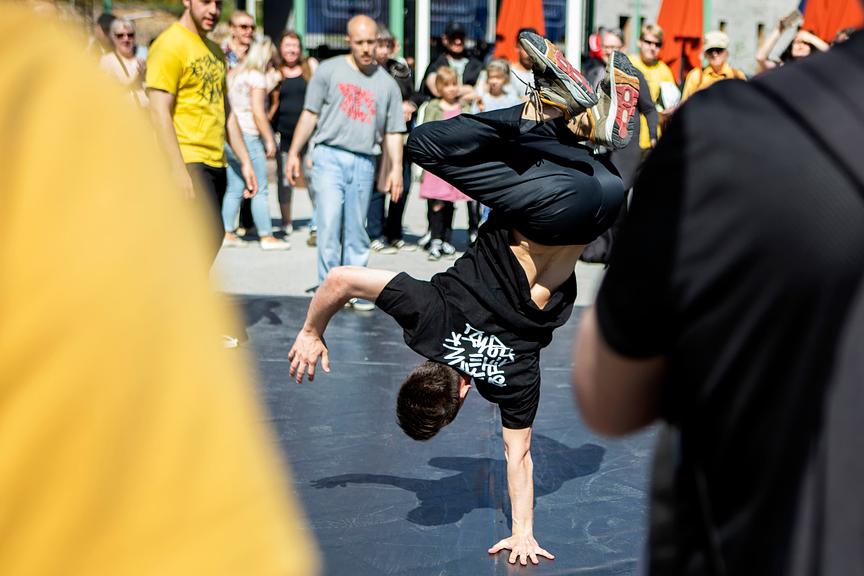What we do?
Break the Fight! provides art educational workshops and performances to municipalities; schools and youth centers. Hip hop is used to promote non-violence in schools. School students take part in hip hop workshops (breaking, rapping, dj/beatboxing and graffiti art), try out new forms of self-expression, and discuss bullying in schools.
Why we do it?
Combating discrimination and poverty through cultural activities.
The Government Programme [7] (2019-2023) emphasises (as did the previous one) the importance of wellbeing opportunities offered by the Culture field. The goal is to bring culture closer to everyone by increasing the amount of art on show in places that are easily accessible to all, such as public spaces and institutions. Access to culture is carried out by incorporating it into children’s and young people’s daily lives, such as activities offered before, after and during school days. One of the main actions is a regular nationwide survey on free-time activity wishes (for more information, visit Youth Wiki/Finland 8.3 National Strategy [8]). The emphasis on accessibility highlights that a lack of funds, nor any otherfactor, need not become an obstacle when it comes to participating in cultural activities, and that wellbeing opportunities for wellbeing offered by the cultural field ought to be recognised.

